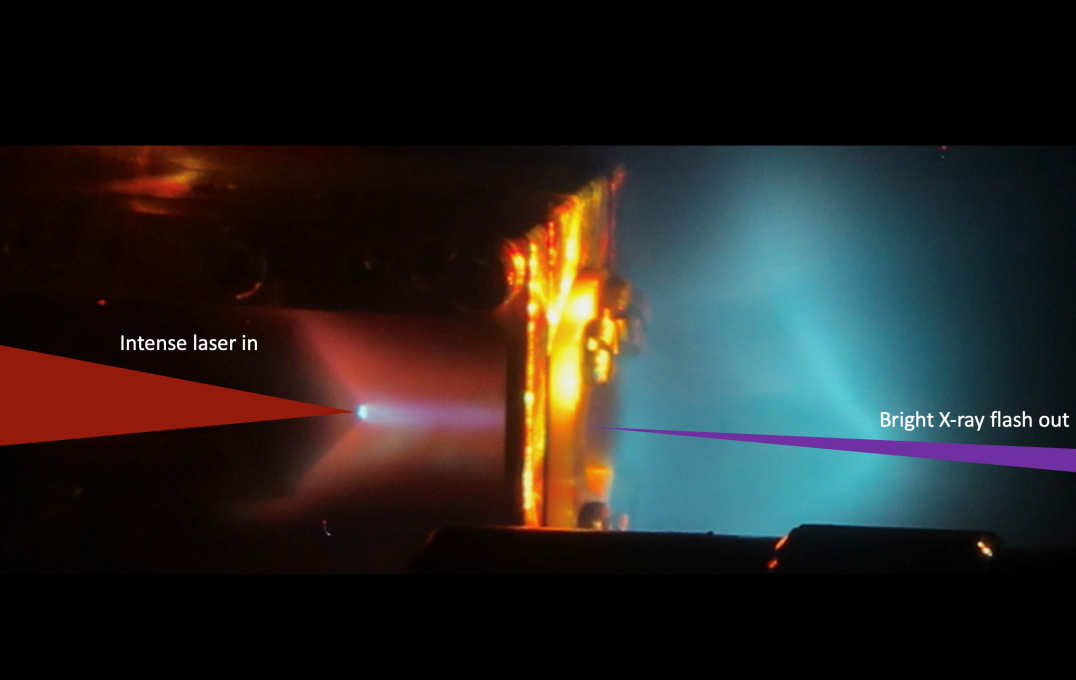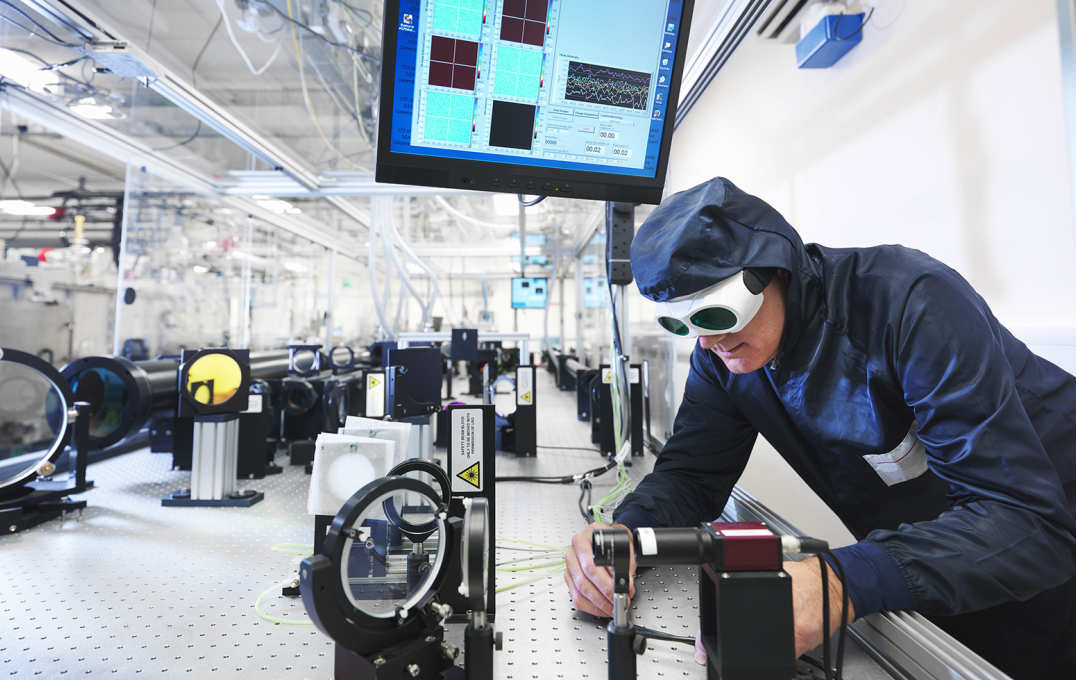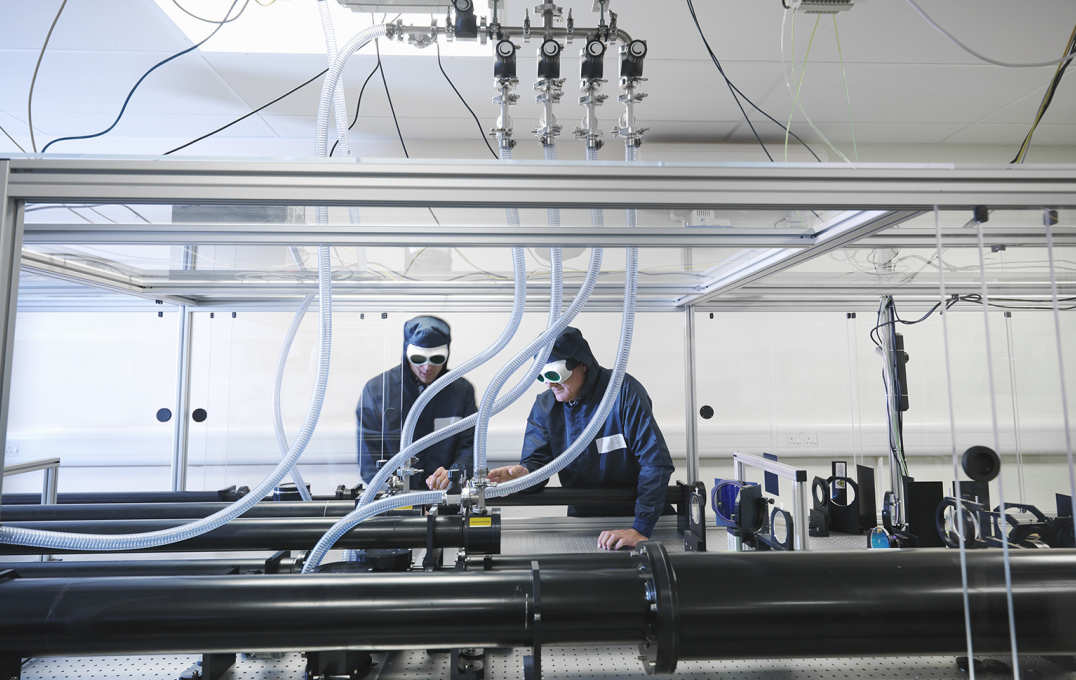
Working with the Gemini Laser. Credit: STFC

Combining powerful lasers and bright x-rays, Imperial and STFC researchers have demonstrated a technique that will allow new extreme experiments.
The new technique would be able to use a single x-ray flash to capture information about extremely dense and hot matter, such as can be found inside gas giant planets or on the crusts of dead stars.
The same conditions are also found in fusion experiments, which are trying to create a new source of energy that mimics the Sun.
We will now be able to probe warm dense matter much more efficiently and in unprecedented resolution. Dr Brendan Kettle
The technique, reported this week in Physical Review Letters, was developed by a team led by Imperial College London scientists working with colleagues including those at the UK’s Central Laser Facility at the Science and Technology Facilities Council (STFC) Rutherford Appleton Laboratory, and was funded by the European Research Council.
The researchers wanted to improve ways to study ‘warm dense matter’ – matter that has the same density as a solid, but is heated up to 10,000?C. Researchers can create warm dense matter in the lab, recreating the conditions in the hearts of planets or crucial for fusion power, but it is difficult to study.
Accelerating discoveries
The team used the Gemini Laser, which has two beams – one which can create the conditions for warm dense matter, and one which can create ultrashort and bright x-rays to probe the conditions inside the warm dense matter.
Previous attempts using lower-powered lasers required 50-100 x-ray flashes to get the same information that the new technique can gain in just one flash. The flashes last only femtoseconds (quadrillionths of a second), meaning the new technique can reveal what is happening within warm dense matter across very short timescales.
First author Dr Brendan Kettle, from the Department of Physics at Imperial, said: “We will now be able to probe warm dense matter much more efficiently and in unprecedented resolution, which could accelerate discoveries in fusion experiments and astrophysics, such as the internal structure and evolution of planets including the Earth itself.”
The technique could also be used to probe fast-changing conditions inside new kinds of batteries and memory storage devices.
Answering key questions
In the new study, the team used their technique to examine a heated sample of titanium, successfully showing that it could measure the distribution of electrons and ions.
Lead researcher Dr Stuart Mangles, from the Department of Physics at Imperial, said: “We are planning to use the technique to answer key questions about how the electrons and ions in this warm dense matter ‘talk’ to each other, and how quickly can energy transfer from the electrons to the ions.”
The Central Laser Facility’s Gemini Laser is currently one of the few places the right conditions for the technique can be created, but as new facilities start operating around the world, the team hope the technique can be expanded and used to do a whole new class of experiments.
Dr Rajeev Pattathil, Gemini Group Leader at the Central Laser Facility, said: “With ultrashort x-ray flashes we can get a freeze-frame focus on transient or dynamic processes in materials, revealing key new fundamental information about materials here and in the wider Universe, and especially those in extreme states.”
-
‘Single-shot multi-keV X-ray absorption spectroscopy using an ultrashort laser wakefield accelerator source’ by B. Kettle et al. is published in Physical Review Letters.
Supporters


Article text (excluding photos or graphics) © Imperial College London.
Photos and graphics subject to third party copyright used with permission or © Imperial College London.
Reporter
Hayley Dunning
Communications Division

Contact details
Tel: +44 (0)20 7594 2412
Email: h.dunning@imperial.ac.uk
Show all stories by this author








Leave a comment
Your comment may be published, displaying your name as you provide it, unless you request otherwise. Your contact details will never be published.